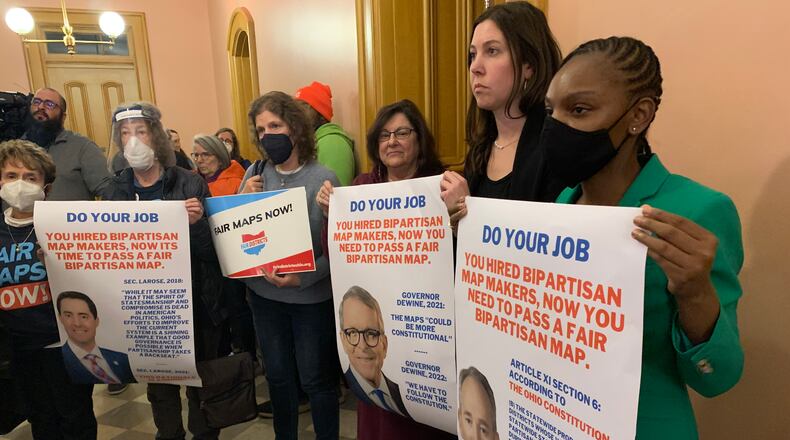In 2015 and 2018, with the overwhelming passage of two constitutional amendments for the state legislature and congressional districts, respectively, Ohio voters sent a clear message that the redistricting process needed to be overhauled. The first point of Issue 1, passed in 2015, reads:
“End the partisan process for drawing Ohio House and Senate districts, and replace it with a bipartisan process with the goal of having district boundaries that are more compact and politically competitive.”
The process so far has proven to be anything but bipartisan, and the draft maps produced have been less competitive and less representative of those living within the new districts.
Lawmakers are not only expected to do the job that voters elected them to do and in accordance with the will of voters who sought to reduce gerrymandering, but the Dayton Daily News also expects that the resultant maps will not harm the wellbeing of our region. An early iteration of the maps had split our area in half and separated Dayton from Wright-Patterson Air Force Base. While that map is no longer being considered, such a dramatic reconfiguration could have been devastating to our local economy and political influence. We must emphasize the importance of the language included in the first point of the congressional amendment: Keep local communities together.
Gerrymandered districts also have significant consequences for political polarization. With uncompetitive districts, the “real” election plays out in the primary and encourages more partisan candidates who often run to the extremes. In an already divisive, polarized political climate, we need to redistrict in such a way that reduces extremism — not encourages it.
Beyond the long-term damage that could be done by these maps, there is an immediate harm that we have already witnessed. The estimated costs of a second set of primaries now required for Ohio General Assembly seats caused by this process are upward of $30 million across the state and more than $500,000 in Montgomery County alone.
Our call is for lawmakers to do the right thing and to stop dragging this process out. Create a map that is fair to voters and to our region, fulfilling the job they were elected to do. We again stress the importance of “keeping local communities together.”
Further, it is imperative that the state hire independent mapmakers who can work in full view of the public. Despite a direct call for transparency in the map creation process in both constitutional amendments, map-drawing largely has been done behind closed doors and the results revealed only a few hours before being voted upon, freezing out the minority party commissioners. The entire process should be livestreamed, as has been done before, and conducted as transparently and openly as possible.
Our world is constantly changing. If we are to successfully navigate to a future that best serves our region, we need new maps that fairly represent the will of those who elect our lawmakers — not maps that impose the will of lawmakers on us.
About the Author
